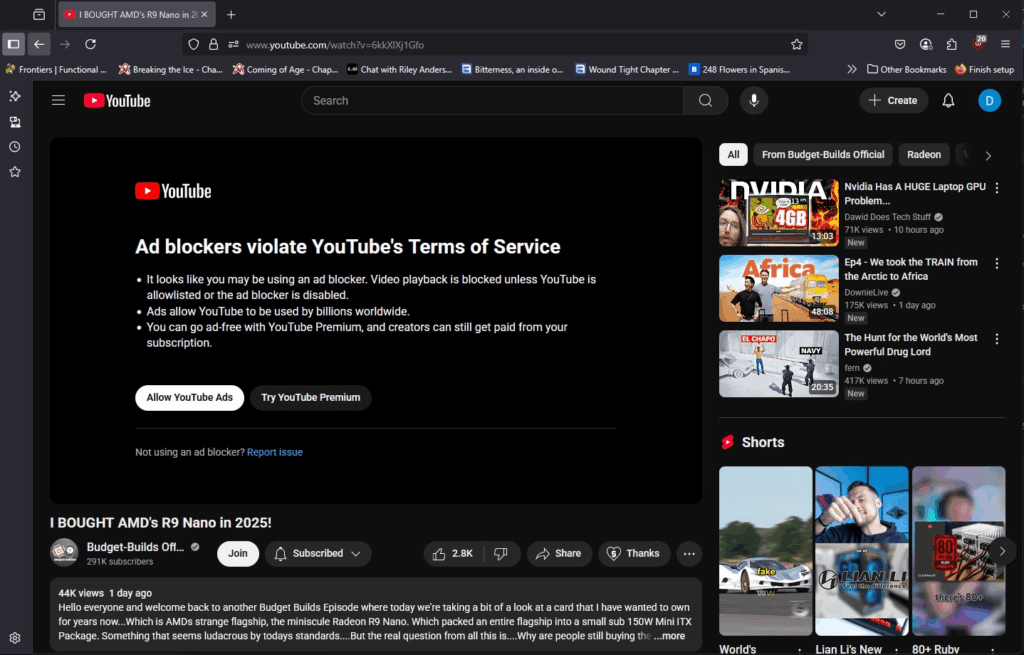In a decisive move to strengthen its advertising revenue, YouTube has ramped up efforts to thwart the use of ad blockers among its users. As of June 2025, individuals relying on popular ad-blocking extensions like uBlock Origin and AdBlock are facing stringent restrictions on the platform. Upon attempting to view videos, these users encounter messages asserting that ad blockers are prohibited and are prompted to either disable their ad-blocking software or consider subscribing to YouTube Premium to enjoy ad-free content. This initiative marks a pivotal shift in how YouTube manages ad-blocking behavior, underscoring its commitment to maintaining a revenue model which supports not just the platform itself but also its extensive network of content creators that rely on advertisement income for sustainability.
The implications of this crackdown are significant, particularly in regions like India and the United States, where the platform boasts millions of users. Initially rolled out as a trial, the technical enforcement against ad blockers has now become a global strategy, employing advanced techniques to ensure that video playback is contingent upon the presence of advertisements. The changes have sparked a wave of discontent among users who feel cornered by the lack of options: either endure invasive ads, fork out money for a monthly subscription, or abandon the platform altogether. This dissatisfaction reflects a broader tension between user experience and the economic imperatives that drive free-to-use platforms like YouTube. As the platform’s user base is projected to swell to 2.85 billion by the end of 2025, the challenge for YouTube will lie in balancing advertisements with user satisfaction, while ensuring that creators are adequately compensated for their content.
Despite the backlash, the rationale behind YouTube’s tough stance on ad blockers is clear—ads are fundamental to the platform’s accessibility for billions of users worldwide. The move also feeds into a broader trend seen across digital platforms seeking to validate advertising as an essential revenue stream. For YouTube, which anticipates a surge in ad revenue up to $36.1 billion in 2025, this crackdown on ad blockers underscores a clear message: users have the option to support the platform’s business model by either accepting ads or subscribing to an ad-free experience. As these policies unfold, they will likely continue to shape not only user engagement metrics but also content creator dynamics on the platform.
Summary
YouTube is intensifying its crackdown on ad blockers by implementing strict measures that prevent users from bypassing advertisements, a critical revenue source for the platform and its content creators. Users who attempt to play videos with ad-blocking extensions such as uBlock Origin and AdBlock are now confronted with warnings that force them to disable their ad blocker or subscribe to YouTube Premium for an ad-free experience. This initiative, which began with limited testing in select regions and escalated to a global rollout, has stirred significant user backlash as many feel their viewing experience is compromised with restricted options. As YouTube boasts an expanding user base projected to reach 2.85 billion by 2025, its ad revenue is expected to rise to $36.1 billion this year, indicating that the company is keen on maximizing its earnings while offering free access to billions worldwide.



More Stories
Perplexity AI Video Generation: New Feature Unveiled on X
SpaceX Starship Explosion: Major Setback Before Tenth Test Flight
Apple Class Action Lawsuit Over Cryptocurrency Scam